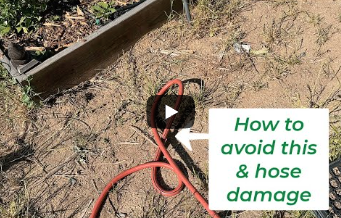Mastering Companion Planting: A Comprehensive Guide with FAQs on Popular Pairings
Companion planting is a powerful, organic gardening technique that maximizes the natural benefits plants provide each other. By strategically selecting and positioning plants, you can create a flourishing, harmonious garden that promotes growth, deters pests, and conserves resources. In this extensive guide, we’ll delve into the principles of companion planting, share valuable tips, and answer some of the most common questions about popular companion pairs.
What is Companion Planting?
Companion planting is the practice of arranging plants together in a garden to create mutual benefits, such as improved growth, pest control, and pollination. By choosing plants that complement each other, you can create a balanced ecosystem that supports a healthy, thriving garden.
The Benefits of Companion Planting
Companion planting offers a range of advantages, including:
- Natural Pest Control – Some plants repel pests or attract beneficial insects, reducing the need for harmful chemical pesticides.
- Improved Soil Health – Certain plants can enrich the soil with essential nutrients, providing a fertile environment for your garden.
- Enhanced Growth – Plant pairings can create a synergy that promotes robust growth and higher yields.
- Efficient Use of Space – Planting compatible plants together can help maximize garden space, leading to abundant harvests.
Understanding the Science of Companion Planting
Companion planting is rooted in the principles of ecology, which emphasizes the interconnectedness of living organisms and their environment. By replicating natural ecosystems, you can build a more resilient, productive garden that can better withstand pests, diseases, and other challenges.
Top Companion Planting Tips
To successfully implement companion planting in your garden, consider the following tips:
- Know Your Plants: Research the specific needs and characteristics of the plants you want to grow, such as their preferred growing conditions, nutrient requirements, and natural pest deterrents.
- Plan Your Garden Layout: Arrange your plants in a way that maximizes their mutual benefits, considering factors such as sunlight, water, and soil requirements.
- Rotate Crops: To maintain soil health and prevent the buildup of pests and diseases, change the location of your plants each growing season.
- Experiment and Observe: Try different plant combinations and monitor the results, making adjustments as needed to find the best pairings for your garden.
FAQs on Popular Companion Planting Pairs
In this section, we’ll address some of the most common questions about popular companion pairs, providing answers to help you make informed decisions for your garden.
- Do marigolds really help with pest control when planted with tomatoes? Yes, marigolds can help with pest control when planted alongside tomatoes. They emit a strong scent that repels several pests, including nematodes, whiteflies, and aphids. Additionally, marigolds can attract beneficial insects like ladybugs and lacewings, which prey on common tomato pests.
- What are the benefits of planting peppers and basil together? Planting peppers and basil together offers multiple benefits. Basil can deter common pepper pests, such as aphids and spider mites, with its strong scent. It is also believed that basil can enhance the flavor of peppers. Furthermore, both plants have similar growing conditions, making them a great pairing.
- How can radishes protect squash plants from pests? Radishes can help protect squash plants from pests like squash bugs and squash vine borers. The pungent smell of radishes acts as a natural deterrent for these pests, while their flowers attract beneficial insects that prey on these harmful insects. Additionally, radishes can be used as a trap crop for flea beetles, drawing them away from squash plants.
- Can dill attract beneficial insects to help broccoli plants? Yes, dill can attract beneficial insects that help protect broccoli plants. Dill’s flowers attract predatory insects, such as ladybugs, lacewings, and parasitic wasps, which feed on common broccoli pests like aphids, cabbage worms, and whiteflies. Dill can also repel pests like spider mites, making it a valuable companion for broccoli.
- Why is borage considered a great companion for strawberries? Borage is an excellent companion for strawberries because it offers several benefits. Firstly, borage attracts pollinators, such as bees, which can help increase strawberry yields. Secondly, borage has a deep taproot that can bring up nutrients from deeper soil layers, making them more accessible to strawberry plants. Lastly, borage is known to deter pests like cabbage worms and can also help improve the flavor of strawberries.
By understanding the principles and benefits of companion planting, and armed with answers to common questions, you’ll be well-prepared to create a thriving, organic garden that maximizes the potential of each plant. For more information, see Companion Planting for Vegetables Reference.
More From Our Master Gardener
Recent Posts

❄️ Snow as Fertilizer – The Truth About “Poor Man’s Nitrogen”

5 Unexpected Winter Weed Control Strategies (That Don’t Involve Mulch)

Harnessing Winter Sun – Passive Solar Tricks for Your Garden

How to Grow Spinach – The Ultimate Beginner’s Guide for Tender, Nutritious Leaves

How to Grow Peas: The Ultimate Beginner’s Guide for Sweet, Crisp Harvests














